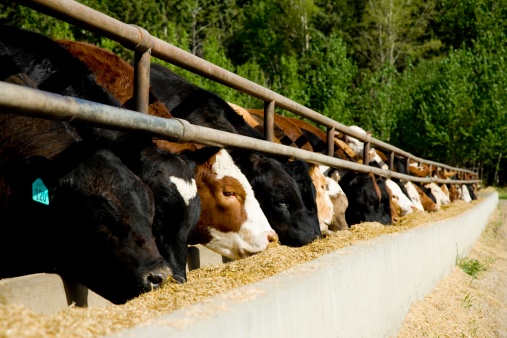
The likelihood that grocery store prices will follow the commodity prices down, though, is reasonably remote. For one thing, retail prices do not change as fast for food as they do with other commodities like gasoline. For another, the big increases in retail food prices have come in beef, pork, chicken and fresh fruits and vegetables, not in grains.
Meat prices are not likely to fall much in the near term as pork producers continue to battle a bacterial disease that is killing piglets and beef producers try to build up the herds they culled a couple of years ago when beef prices were low. Prices for chicken have risen as consumers look for ways to reduce their grocery bill by buying lower priced poultry, driving up demand for chicken and raising prices.
The most significant driver of higher food prices is the continuing drought in California, which produces nearly half of all U.S. fresh fruits and vegetables. The state also produces a significant portion of the nation’s beef and eggs. Prices for fresh fruits and vegetables could rise by 3% this year, with beef rising 6% and eggs up 5% due to the drought. Rice could rise as much as 20%, according to one estimate.
Higher fuel prices also figure into the rising cost of food, to say nothing of the impact of higher gasoline prices on consumer budgets. Some relief from rising gas prices may be on the way, however. The national average price per gallon has fallen nearly three cents in the past week, though it still remains about 17 cents a gallon higher than it was a year ago.
ALSO READ: Ten States With the Slowest Growing Economies
The #1 Thing to Do Before You Claim Social Security (Sponsor)
Choosing the right (or wrong) time to claim Social Security can dramatically change your retirement. So, before making one of the biggest decisions of your financial life, it’s a smart idea to get an extra set of eyes on your complete financial situation.
A financial advisor can help you decide the right Social Security option for you and your family. Finding a qualified financial advisor doesn’t have to be hard. SmartAsset’s free tool matches you with up to three financial advisors who serve your area, and you can interview your advisor matches at no cost to decide which one is right for you.
Click here to match with up to 3 financial pros who would be excited to help you optimize your Social Security outcomes.
Have questions about retirement or personal finance? Email us at [email protected]!
By emailing your questions to 24/7 Wall St., you agree to have them published anonymously on a673b.bigscoots-temp.com.
By submitting your story, you understand and agree that we may use your story, or versions of it, in all media and platforms, including via third parties.
Thank you for reading! Have some feedback for us?
Contact the 24/7 Wall St. editorial team.


